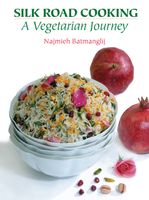Advertisement
Cardamom
Appears in
Published 2000
This widely available, highly flavored spice, a member of the ginger family, is native to India; travelling via caravan routes, it became a favorite in Iran, Greece and Rome by classical times.
There are two types of cardamom:
The oval green variety (which may be bleached and sold as “white cardamom”) is known in India as the “queen of spices.” The larger, husky skinned, dark-brown type is called black cardamom. Green cardamom has a sweet, zesty taste with a hint of eucalyptus. Its pods contain about 20 small, round, black seeds. In many Silk Road countries, people suck the whole pods to sweeten the breath, especially after eating garlic; there is also a green cardamom tea, popular as a digestive. You will notice that some recipes call for using the whole pod (which gives a stronger flavor than the seeds alone); you should bruise the pod with the flat of a knife before adding it to a dish. Other recipes specify cardamom seeds alone: To get them, simply crack the pod and scrape out the seeds with the point of a knife. Black cardamom has a mellow, smoky taste and a nutty aroma. It is generally used as a whole pod, which should be bruised before cooking. While it is not used in sweet dishes—its peppery, medicinal flavor is not suitable for them—it is found in Afghan, Uzbek and Indian chutneys, rice dishes and masalas.


